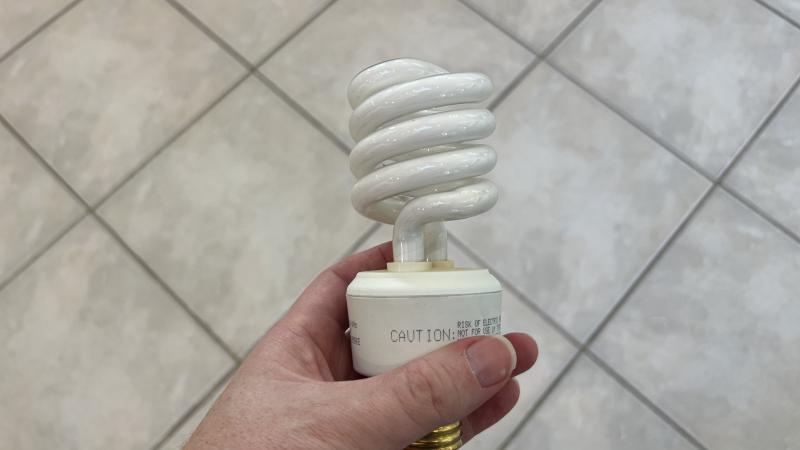Fire chief: Toxic gas and electrocution present serious risks to firefighters putting out EV fires
Firefighters in Sacramento, California, Rep. Jay Obernolte said at the hearing, had to create a makeshift pond to submerge a smoldering EV in because it kept reigniting.
A House subcommittee hearing revealed the extent of the hazard posed to firefighters and other first-responders from the effects of electric vehicle battery fires.
“EV [electric vehicle] fires are fundamentally different from traditional internal combustion engine fires, and they present new dangers that our first responders need to be prepared for,” said Rep. Jay Obernolte, R-Calif., chair of the House Subcommittee on Investigations and Oversight of the Committee on Science, Space and Technology.
Thermal runaway
Lithium-ion batteries can experience what’s called “thermal runaway.” Inside the batteries are a cathode and an anode, which are physically separated by a component called a separator. If that separator is compromised as a result of a defect or damage from an accident, the battery cell enters an uncontrollable, self-heating state that produces extremely high temperatures, cell venting of toxic gasses, smoke and fire.
Obernolte explained that, with 3.1 million EV in operation today, EV fires aren’t very common. However, experts in the auto industry, he said, estimate that there will be nearly 130 million EVs on America’s roads by 2030.
He said that the fires from electric vehicles produce a number of risks to firefighters, including exposure to toxic gasses and electrocution. The fires burn very hot, can take hours or even days to put out, and are at risk of reignition.
“As the presence of these vehicles continues to grow on our roads, so does the threat and danger of the fires they can produce,” Obernolte said.
He said firefighters in Wakefield, Massachusetts, had to dump 22,000 gallons of water on a burning EV for two hours to put it out. That’s enough water to fill more than 300 bathtubs.
Firefighters in Sacramento, California, Obernolte said, had to create a makeshift pond to submerge a smoldering EV in because it kept reigniting.
Fire Chief Dan Munsey, Fire Chief for the San Bernardino County Fire Department in California, explained that the EV fires give off “copious amounts of toxic chemical gasses,” and current personal protective equipment (PPE) hasn’t been designed to protect firefighters from the types of gasses their exposed to when responding to these kinds of fires.
Among those chemicals, Munsey said, is hydrogen fluorine. According to the CDC, breathing the acid can damage lung tissue and cause swelling and fluid accumulation in the lungs.
“Frankly, over my career, I've seen way too many firefighters die from cancer. Our cancer rate is higher than the civilian population. The electric vehicle lithium ion batteries pose a challenge to firefighters' health,” Munsey said.
Funding
Munsey said that the PPE and other gear firefighters wear costs between $5,000 and $10,000 per ensemble. His department requires their firefighters to launder the PPE themselves, but with EV fires, the whole ensemble has to be taken out of service and sent to the manufacturer for specialized cleaning service. About 4% of the ensemble sent out for cleaning fail the cleaning service, he said, and the department has to buy new PPE.
One way firefighters control the fire and prevent the gasses from spreading, Munsey explained, is to cover them with blankets that cost $3,000 to $5,000 each.
He told of a department that responded to an EV that caught fire in a Denver-area home garage. The responders used the blanket to contain the smoke and gasses, and then towed the vehicle to a tow yard, where they dug a pit, filled it with water, and immersed the vehicle in the pool.
Munsey said the San Bernardino Fire Department is looking to buy a heavy wrecker, which is a large towing vehicle, and that will cost about $1.2. This will allow them to lift and move burning EVs. They’re also looking at investing in a “dip tank” on a trailer that will allow them to submerge burning EVs.
The cost of the training that firefighters need to know how to deal with the fires is going to be about $2,500 for each firefighter, Munsey said. With 1.1 million firefighters nationwide, that will cost about $3 billion.
Rep. Rich McCormick, R-Ga., citing data from the National Volunteer Fire Council, said of the approximately 29,452 fire departments throughout the country, 24,208 are entirely or mostly made up of volunteer firefighters.
“Given that, do you think that there's any way to prepare these guys for the future challenges of fighting EV fires?” McCormick asked, especially if EV adoption grows to 130 million by 2030.
Munsey said with enough time and funding, it is possible, but it would require billions in funding.
Stranded energy
Dr. Judy Jeevarajan, executive director of the Electrochemical Safety Research Institute at UL Research Institutes, testified that battery cells in an EV are wrapped in sealed containers that prevent water from getting inside, which makes it difficult to address fires.
While some cells in a pack can be damaged, others still hold a charge. This is a problem called “stranded energy,” which presents to firefighters a significant risk of electric shock or electrocution when dumping large amounts of water on a flaming battery.
Jeevarajan proposed technology, like a gas rupture valve — something that opens up the battery casing — so that firefighters can get water inside the battery. This would allow them to get water to the cells. She also said some type of technology is needed to know which cells are energized and need to be discharged to prevent electric shock.
“I think that there needs to be a little bit more research and design and engineering that goes into this. And I think we can, you know, get to that,” Jeevarajan said.
She also said that there are cybersecurity risks associated with the batteries. Their software is often wired to the internet, and it controls the voltage and amps during charge and discharge. That software, she said, can be compromised by hackers and cause batteries to catch fire.
Munsey said that hobbyists who modify their electric vehicles can tamper with batteries and increase the risk of fires. He also said that as EVs age and home mechanics start replacing batteries with cheaper, poorly made batteries, the number of EV fires will increase.
“I believe that people should be able to work on hobbies. We just need to make sure that we're giving them the ability to purchase the correct batteries, to install them correctly and maintain their vehicles,” Munsey said.
Infinitesimal
McCormick said that all of these safety concerns are related to increased EV adoption, which will have an “infinitesimal” impact on carbon dioxide emissions.
A study by the Manhattan Institute found that EVs production creates a lot more carbon dioxide emissions to manufacture than conventional cars. Whether or not there’s a net decrease in emissions over the life of a car depends on so many factors that there’s no certainty that widespread adoption will lower overall emissions from the transportation sector.
“If we're talking about the environment, I really don't think we're having an honest conversation. I think that's where we need to start this,” McCormick said.
















